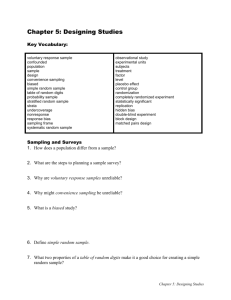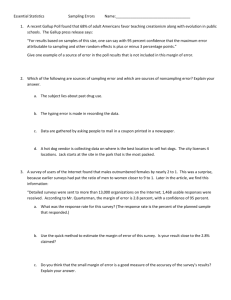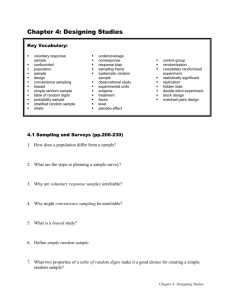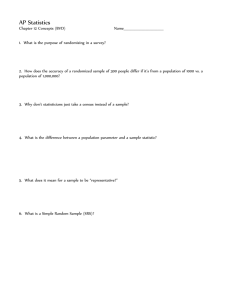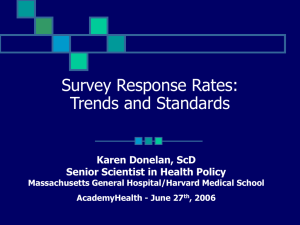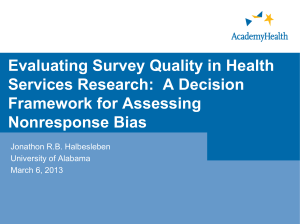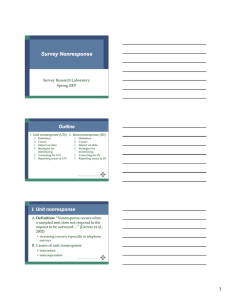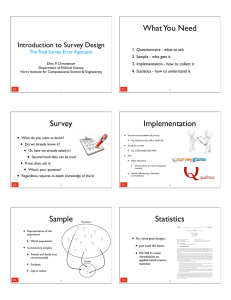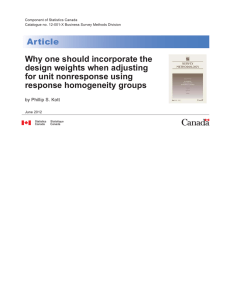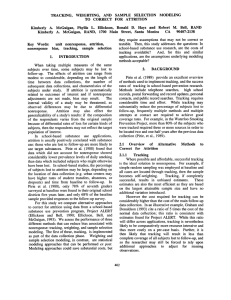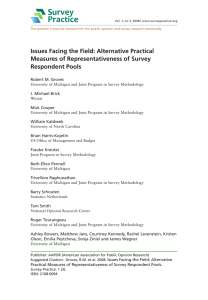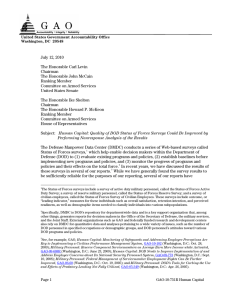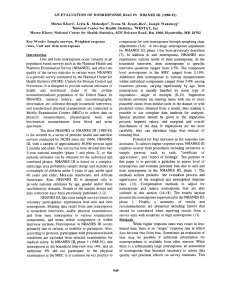Inference for Sampling
advertisement
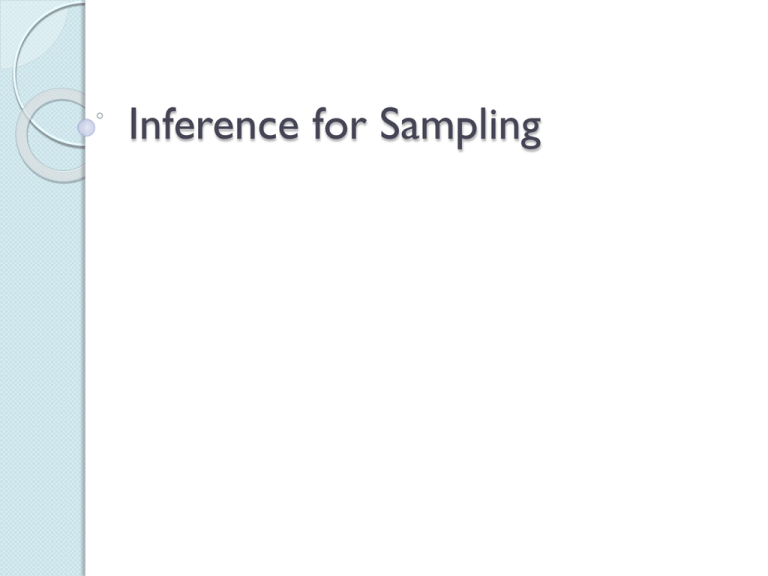
Inference for Sampling Inference for Sampling The purpose of a sample is to give us information about a larger population. The process of drawing conclusions about a population on the basis of sample data is called inference. Why should we rely on random sampling? 1)To eliminate bias in selecting samples from the list of available individuals. 2)The laws of probability allow trustworthy inference about the population • Results from random samples come with a margin of error that sets bounds on the size of the likely error. (It tells us how much variability to expect.) • Larger random samples give better information about the population than smaller samples. Important Note on Bias Bias is introduced by the way in which a sample is selected or by the way in which the data are collected from the sample. Increasing the size of the sample does nothing to reduce the bias! Sample Surveys: What Can Go Wrong? Most sample surveys are affected by errors in addition to sampling variability. Good sampling technique includes the art of reducing all sources of error. Sampling Error Mistakes made in the process of taking a sample that could lead to inaccurate information about the population Voluntary response Convenience sampling Undercoverage Undercoverage Undercoverage occurs when some groups in the population are left out of the process of choosing the sample. EXAMPLE: A sample survey of households will miss homeless persons, prison inmates, students living in dorms, etc. Nonsampling Error Can plague even a census Nonresponse Response Bias Poor wording of questions Nonresponse Nonresponse occurs when an individual chosen for the sample can’t be contacted or refuses to participate. NOTE: This differs from “voluntary response” because in a voluntary response survey the individuals have all opted to take part in the survey. In nonresponse, those chosen for the sample do not participate. Voluntary response vs. Nonresponse Voluntary response is sampling error since it has to do with choosing the sample. Nonresponse is nonsampling error since it occurs after the sample has been chosen. Response Bias A systematic pattern of incorrect responses EXAMPLE: People know they should vote, so when asked by an interviewer if they voted in the last election, they will say that they did. Faulty memory: “Have you visited the dentist in the last 6 months?” Wording of Questions Confusing or leading questions can introduce strong bias EXAMPLE: The same sample was asked both of these questions: “Should illegal immigrants be prosecuted and deported for being in the U.S. illegally, or shouldn’t they?” (69% favored deportation) “Should illegal immigrants who have been in the U.S. for two years be given the chance to keep their jobs and eventually apply for legal status?” (62% responded “yes”) Does order matter? Suppose college students were asked these questions: 1. 2. “How happy are you with your life in general?” (Scale of 1 to 5) “How many dates did you have last month?”

